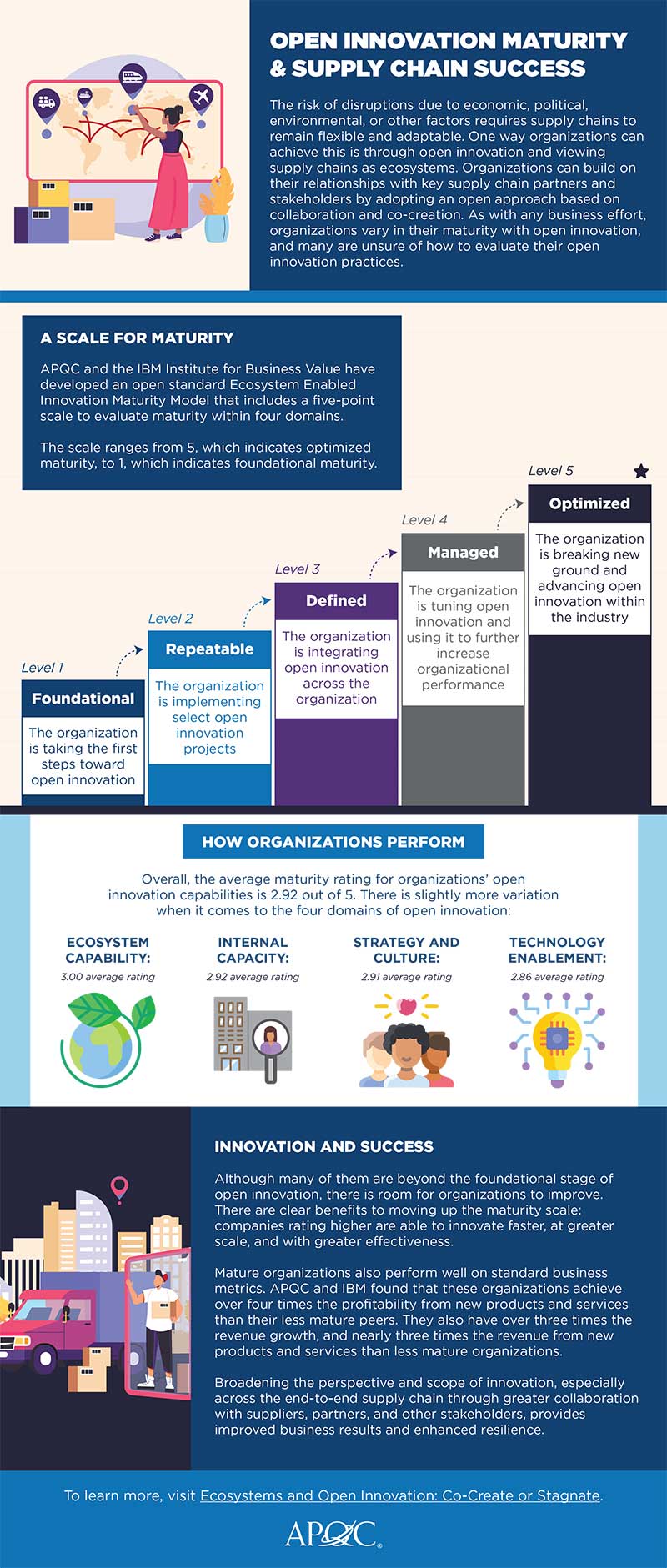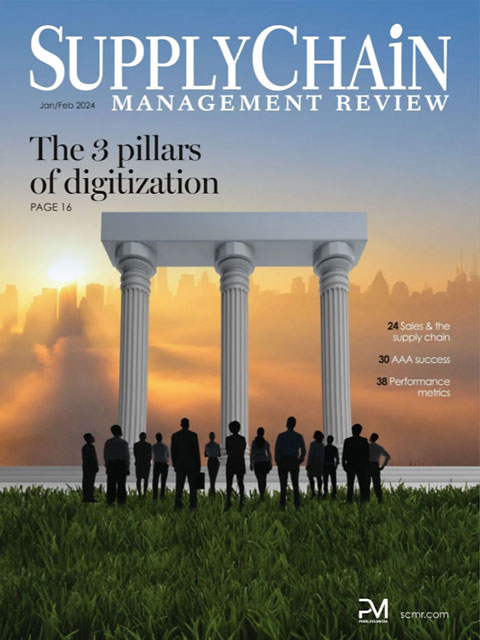Sorry, but your login has failed. Please recheck your login information and resubmit. If your subscription has expired, renew here.
January-February 2024
Back in 2019, we seemed on a consistent path to the future. Then COVID-19 arrived on the global scene, and all predictions went out the window. As 2024 begins, everyone wants to know what the year will look like. I predict continued interest in circular supply chains, cybersecurity, visibility, and digital supply chains, to name a few. But I am not alone. So, I’d like to share five things that I am particularly interested in this year. Browse this issue archive.Need Help? Contact customer service 847-559-7581 More options
The risk of disruptions due to economic, political, environmental, or other factors requires supply chains to remain flexible and adaptable. One way organizations can achieve this is through open innovation and viewing
supply chains as ecosystems. Organizations can build on their relationships with key supply chain partners and stakeholders by adopting an open approach based on collaboration and co-creation. As with any business effort,
organizations vary in their maturity with open innovation, and many are unsure of how to evaluate their open innovation practices.
A Scale for Maturity
APQC and the IBM Institute for Business Value have developed an open standard Ecosystem Enabled Innovation Maturity Model that includes a five-point scale to evaluate maturity within four domains. The scale ranges from 5, which indicates optimized maturity, to 1, which indicates foundational maturity.
Innovation and Sucess
Although many of them are beyond the foundational stage of open innovation, there is room for organizations to improve. There are clear benefits to moving up the maturity scale: companies rating higher are able to innovate faster, at greater scale, and with greater effectiveness. Mature organizations also perform well on standard business metrics. APQC and IBM found that these organizations achieve over four times the profitability from new products and services than their less mature peers. They also have over three times the revenue growth, and nearly three times the revenue from new products and services than less mature organizations. Broadening the perspective and scope of innovation, especially across the end-to-end supply chain through greater collaboration with suppliers, partners, and other stakeholders, provides improved business results and enhanced resilience.
View the full size infographic here.
SC
MR
Sorry, but your login has failed. Please recheck your login information and resubmit. If your subscription has expired, renew here.
January-February 2024
Back in 2019, we seemed on a consistent path to the future. Then COVID-19 arrived on the global scene, and all predictions went out the window. As 2024 begins, everyone wants to know what the year will look like. I… Browse this issue archive. Access your online digital edition. Download a PDF file of the January-February 2024 issue.The risk of disruptions due to economic, political, environmental, or other factors requires supply chains to remain flexible and adaptable. One way organizations can achieve this is through open innovation and viewing
supply chains as ecosystems. Organizations can build on their relationships with key supply chain partners and stakeholders by adopting an open approach based on collaboration and co-creation. As with any business effort,
organizations vary in their maturity with open innovation, and many are unsure of how to evaluate their open innovation practices.
A Scale for Maturity
APQC and the IBM Institute for Business Value have developed an open standard Ecosystem Enabled Innovation Maturity Model that includes a five-point scale to evaluate maturity within four domains. The scale ranges from 5, which indicates optimized maturity, to 1, which indicates foundational maturity.
Innovation and Sucess
Although many of them are beyond the foundational stage of open innovation, there is room for organizations to improve. There are clear benefits to moving up the maturity scale: companies rating higher are able to innovate faster, at greater scale, and with greater effectiveness. Mature organizations also perform well on standard business metrics. APQC and IBM found that these organizations achieve over four times the profitability from new products and services than their less mature peers. They also have over three times the revenue growth, and nearly three times the revenue from new products and services than less mature organizations. Broadening the perspective and scope of innovation, especially across the end-to-end supply chain through greater collaboration with suppliers, partners, and other stakeholders, provides improved business results and enhanced resilience.

View the full size infographic here.
SC
MR


Latest Supply Chain News
- Despite American political environment, global geopolitical risks may be easing
- Joseph Esteves named CEO of SGS Maine Pointe
- Employees, employers hold divergent views on upskilling the workforce
- April manufacturing output slides after growing in March
- Q1 sees a solid finish with positive U.S.-bound import growth, notes S&P Global Market Intelligence
- More News
Latest Podcast

 Explore
Explore
Software & Technology News
- Technology’s role in mending supply chain fragility after recent disruptions
- Tech investments bring revenue increases, survey finds
- Survey reveals strategies for addressing supply chain, logistics labor shortages
- AI, virtual reality is bringing experiential learning into the modern age
- Humanoid robots’ place in an intralogistics smart robot strategy
- Tips for CIOs to overcome technology talent acquisition troubles
- More Software & Technology
Latest Software & Technology Resources

Subscribe

Supply Chain Management Review delivers the best industry content.

Editors’ Picks






